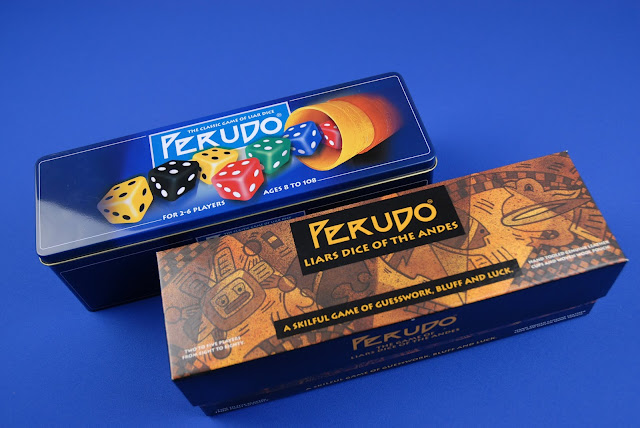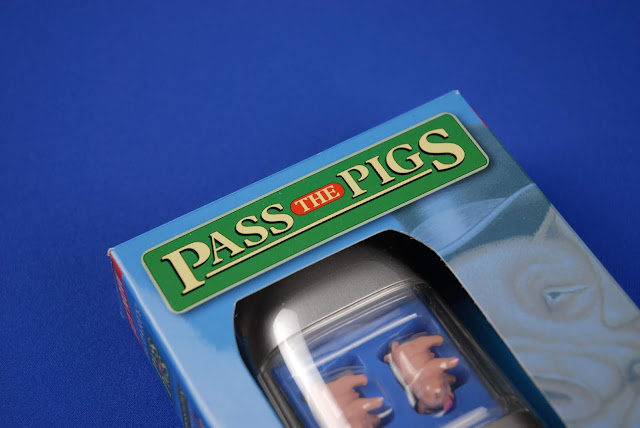Review: Stone Age
Players: 2-4
Ages: 10+
Time to play: 60 minutes
Time to go back, to a much simpler time... in fact a much, much simpler time. When all we had to worry about was feeding ourselves and protecting ourselves from a menagerie of predatory animals. It might sound like a night out in your local town, but I'm actually talking about the neolithic era, which saw the dawn of agriculture, human technological advancements such as tool making and the beginning of permanent communities.
"Stone Age"designed by Bernd Brunnhofer is a worker placement game for 2 to 4 players which was released in 2008. In this game you play the leader of your own tribe competing against other tribes for resources in the neolithic era. You need to gather resources in order purchase huts to house your growing population and also spend time collecting technologies in the form of civilisation cards.
Along the way you'll be making decisions on where to send your workers. They can be used to acquire resources, upgrade tools, research agriculture or even get more workers. The possibilities are endless and that's what makes this game so interesting.
When I wanted to purchase Stone Age, it had sold out everywhere so I had to purchase a German version - which is obviously better engineered than the English version, but has less of a sense of humour. Luckily, the game components are language independent so I only had to download the UK instructions, which of course I immediately laminated.
Components
As you'd expect from a worker placement game, Stone age is bursting with components. Included alongside the instructions are a game board, 4 player boards, 58 wooden resources (depicting wood, clay, stone and gold), 8 wooden scoring markers, 40 wooden people, over 90 tiles depicting food buildings and tools, 36 uniquely illustrated cards 7 dice and a leather cup to roll them in.Straight out of the box this feels like a quality board game. The workers and resources are made from brightly coloured painted wood, the dice are wooden and the dice cup is made from untreated leather for that authentic neolithic feel.
The artwork on the board is beautifully illustrated and crammed full of detail and provides the perfect backdrop for the game. It even has artwork on the back of the board! The cardboard components are thick and durable and of a high quality.
The cards too are of a high quality, durable and beautifully illustrated, depicting the various bonuses and technologies that players can earn.
How to play
Let me just say that for the casual gamers out there, Stone age looks much more complicated than it actually is. It's very easy to play and I was easily able to explain the rules to a couple of non-gamers in 5 minutes, and by the end of the first round they were totally familiar with how everything worked and were keen to get stuck in.To begin with, the board is laid out and the resources are placed on their designated spots. The civilisation cards are shuffled and four are placed on the board. The huts are also shuffled and stacked on the board in their designated spots.
Players each receive a handy player aid which reminds you of the mechanics of the game, 12 food and five workers ready to start collecting resources.
Play is very simple and it divided into three phases:
- Place your workers
- Resolve your worker actions
- Feed your workers
Placing workers
At the beginning of each round someone takes the chief marker to make everyone aware that they are the starting player for that round, then players start placing their workers on the board. Players can place any number of their workers on a single location on the board (unless that location is has a limited number of spaces available). The next player then does the same, and so on until play reaches the starting player again. If the starting player didn't place all of his workers previously then he can place any number of his remaining workers on a different location. This continues around the table until all players have placed all of their workers on the board.Resolving Actions
After the placement phase above, the worker actions are resolved. Depending on where you place your workers decides how your actions are resolved. There are effectively four types of action you can carry out:You can gather resources such as food, wood, clay, stone or gold. To do this you roll dice equal to the number of workers you have placed in the relevant areas, you then divide the total on the dice by a specific value to determine how many resources you receive, the more valuable the resource, the higher the value to be divided by.
Food is the cheapest resource with a value of 2 and gold the most expensive with a value of 6. So if your workers are placed on food for example and you roll a total of 12 that equates to 6 food (12/2=6), but had your workers had been placed on gold instead you would have only received 2 gold (12/6=2). This means that to maximise gains from higher value resources you need to place more workers on there.
You can gain worker advantages by placing workers on special locations on the board. These places give you immediate effects which do not require a dice roll and can give you advantages over competing tribes. For example, placing two workers in the mating hut immediately rewards you with an extra worker ready to be played next turn. You can have up to 10 workers in play, but remember that you do have to feed them all.
Placing a worker on the farm allows you to move your marker up on the agriculture track which means you produce a free food every round, so that's one of your workers fed for the rest of the game! The agriculture track goes up to 10 so you can generate enough food to feed all of your workers if you wanted to without the need to hunt, which leaves your workers free to gather more valuable resources
The final advantage is the tool maker, placing a worker here gives you a tool of value 1 which you can add on to your dice rolls. This can sometimes make the difference between gaining a resource or not. You have space on your player board for three tools and each tool can be upgraded to a value of four with repeated visits to the tool maker. You can use your tools only once per turn after which you turn them on their side. When the turn is over you can turn them back ready for the next round.
You can purchase huts using your resources. Each hut card has a price (for example 1 gold and 2 wood), when you purchase this hut you get to place it on your player board and score its points value immediately moving your marker around the scoring track. You place a single worker on a hut during a placement phase inform the other players of your intent to buy it.
You can buy civilisation cards using resources to give you score multipliers at the end of the game. Each card has a item at the top which give you an immediate benefit such as points or resources or tools. The bottom half of the cards include items which can be collected in sets to give you a bonus at the end of the game. They may also include multipliers which can be applied to the number of huts you have built, workers you have accumulated, tools you have acquired or agriculture points you have on the agriculture track. As with huts, you place a single worker on a civilisation card during a placement phase inform the other players of your intent to buy it.
Its worth pointing out that you can resolve actions in any order you like, so you could gamble on gathering the resources you need to purchase a hut or civilisation card in the same round.
Feed Your Tribe
The very last action after resolving your actions is to feed your workers. Each workers requires one food per turn to survive so if you have 5 workers, you will have to place 5 food from your personal store back to the supply. Make sure you always have enough resources to feed your workers or you could end up with a points penalty!After everyone has fed their tribe, the board is restocked (if any houses or technology cards have been purchased) and the next player to the left takes the chief marker to indicate that they are the starting player in this round.
Play continues until either there are no more cards to stock the board or one of the four supplies of huts runs out. Players then total up their points and bonuses and the player with the highest score wins!
Summary
Stone Age is a great worker placement game that is accessible to seasoned and new gamers alike. It's an ideal game to get people interested in the worker placement genre and its often the game I introduce players to after a gateway game like ticket to ride.The multiple strategies that you can employ means that there is plenty of replay value in this game and people come back to it time and time again. The fact that it is still very popular with the gaming community after 10 years confirms this. The innovative use of dice gives a great risk element for those that enjoy riding their luck but it's not so integral to the game so that it excludes those try to steer clear of randomness.
It has included, modifications to the rules to allow for 2, 3 or 4 players variants and although you have to modify your strategies slightly, the gameplay is just as fun and engaging on each. As with most Eurogames the hidden endgame multipliers make the game exciting right up to the end.
So what is there bad to say about Stone age? not a lot really, it's one of the few games that doesn't have any glaring flaws, it's well balanced, and has plenty of replay value.
I would not hesitate in recommending this game to anyone. I really hope that you pick up a copy and enjoy it!
You can pick up a copy of Stone Age here.










Comments
Post a Comment